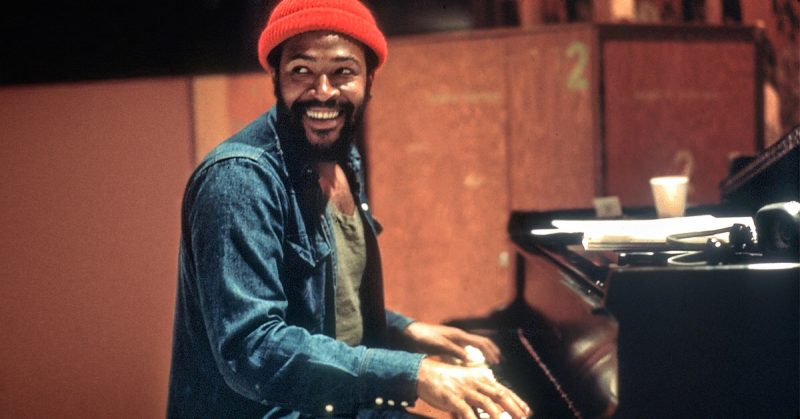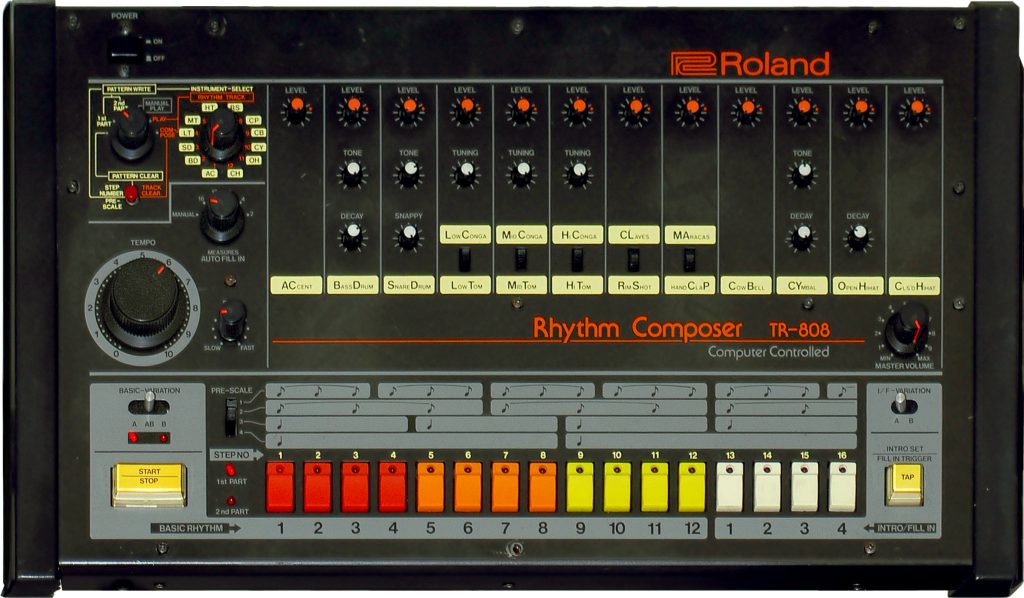Each musical genre can be associated with a key instrument; tenor saxophone for Swing and Bebop, electric guitar for Blues and Rock, and the synthesizer for 80’s pop. With this in mind, what timbres accurately depicts the past decade of music? There isn’t exactly one sound that can fit this criteria and this is a result of the emergence of samplers in modern music production.
Of course sampling dates back to far before rappers and DJ’s had instant sampling and real time loops on portable digital devices. Sampling technology began with utilizing tape recordings in the 1940’s with Henry Chamberlin’s invention of the Model 100 Rhythmate. This instrument played a selection of pre-recorded drum loops on a tape reel so that users could play along with it on other instruments. After a few different versions of the Rhythmate along with the addition of a keyboard and recordings of violins, woodwinds, and choirs, the first Mellotron was born (http://egrefin.free.fr/eng/mellotron/melhist.php)

Alike most things in life, the Mellotron was not perfect to begin with. In an “Poor Man’s Mellotron” Bruce Harvie shares his experience with his own mellotron; “I have to warm mine up for an hour or two to get it to where it will play back the tape banks without warbling, and even then it’s dicey as to whether or not it will play the notes clearly.” Clearly, it takes a bit more than just owning a mellotron to be able to use it effectively. “Mine has trumpet, French horn, violin, cello, and the wonderful sound of individual men’s and woman’s voices… and that’s it!” he further shares.
Harvie recounts the instrumentation of his mellotron as a downside, but for producers and songwriters, this was more than enough to spark creativity. Just listen to iconic Beatles cut, “Strawberry Fields Forever,” which begins with a mellotron that plays a recording of a flute.
Being limited to the option of a flute mellotron helped the fab four bring this tune to life in a way that could not have otherwise been imagined. The warm sound of the warbling, distorted tape disguises the fact that the recording is the sound of a flute, and creates a sound that is entirely unique. Voice and string Mellotrons are notorious for creating dense atmospheric textures, which can be heard in British Progressive Rock outfit Genesis’ “Dancing With The Moonlit Knight.”
Countless recordings have been made legendary by the sound of Mellotron’s. It became a staple of several artists in the 70’s, most notably on David Bowie’s “Space Oddity,” Led Zeppelin’s “Kashmir” Tangerine Dream’s ambient and illustrious “Phaedra.” (http://ultimateclassicrock.com/mellotron-songs/)
Naturally, borrowing pieces of music has evolved. During the 80’s, hip hop artists began using vinyl records to sample recordings. Alike the tape on a Mellotron, the warbling sound of vinyl maintained the warm analog sound in sampling (https://entertainment.howstuffworks.com/music-sampling1.htm). The production of Mellotrons was put to a halt in 1986 due to the invention of digital samplers taking over the market. Fast forward to the 21st century to see Roland’s invention of the SP404, allowing users to record digital samples with a built in microphone and even apply reverb, chorus, and filters to them. (https://www.roland.com/us/products/sp-404sx/)
Despite this convenient technology, many still prefer the unique texture that a mellotron creates. Johnny Greenwood of Radiohead has discussed his own impressions of the Mellotron, “It didn’t sound like any other keyboard. Instead there was a choir, and a weird, fucked-up sort of choir. I love the fact that the notes run out after a few seconds.” As a true testimony of the influence such a unique instrument had on even future generations, various Mellotron’s can be heard throughout the band’s 1997 masterpiece album, “OK Computer.” (https://www.spin.com/2017/06/radiohead-jonny-greenwood-genesis-paranoid-android-ok-computer/)
While digital samplers continue to dominate the scene, there is still a market for the iconic sound of a Mellotron. Just this past weekend at the 2019 NAMM convention, Quilter Labs unveiled The Panoptigon, a machine which plays floppy discs and allows users to manipulate the pitch of the audio, quite reminiscent of the sound of a Mellotron; https://reverb.com/news/video-quilters-panoptigon-brings-back-the-optical-disc-instrument






